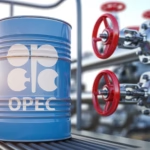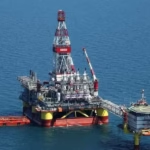Physical Address
304 North Cardinal St.
Dorchester Center, MA 02124
Oil has always been more than a commodity; it is a political tool, an economic weapon, and a lifeline for nations that depend on energy revenues. In 2025, OPEC+ continues to play a decisive role in global energy markets, using coordinated production cuts to balance prices, protect revenues, and maintain market stability. These moves, however, carry far-reaching implications — from the wallets of everyday consumers to the strategies of the world’s largest economies.
This article explores the latest OPEC+ cuts, why they matter, and how they shape the future of the global oil market.
The Organization of the Petroleum Exporting Countries (OPEC), founded in 1960, has long coordinated oil production among its members to influence global supply. In 2016, the group expanded to include major non-OPEC producers like Russia, Kazakhstan, and Mexico, forming OPEC+.
Today, OPEC+ controls nearly 40% of the world’s oil supply and more than 80% of proven reserves. This makes its production policies one of the most powerful levers in the global economy.
When OPEC+ decides to cut production, it reduces supply in the market, often driving prices higher. Conversely, when it increases output, prices can fall. These decisions ripple across industries, from airlines and shipping to manufacturing and agriculture.
The most recent decision to extend and deepen production cuts into late 2025 comes amid a complex backdrop:
Price Stability – Brent crude has struggled to stay above $85 per barrel due to slowing global demand. By cutting supply, OPEC+ aims to prevent prices from collapsing.
Revenue Protection – Oil-dependent nations like Saudi Arabia, Iraq, and Russia rely heavily on energy revenues to fund their budgets. Higher prices mean more fiscal stability.
Global Economic Uncertainty – Weak manufacturing data in Europe, rising interest rates in the U.S., and slowing Chinese demand have all weighed on oil consumption.
Energy Transition Pressure – As renewables and LNG gain traction, OPEC+ faces pressure to maximize the value of oil while it remains dominant.
Higher Fuel Costs – Consumers worldwide will likely see rising gasoline, diesel, and jet fuel prices.
Market Volatility – Traders expect increased price swings as geopolitical risks amplify the effects of cuts.
Stronger Energy Stocks – Oil majors like ExxonMobil, Chevron, and Saudi Aramco benefit from higher crude prices.
Demand Destruction – If prices remain high, some industries and countries may accelerate the shift toward alternative energy.
Strategic Stockpiling – Major importers like China and India may increase oil storage to guard against future supply shocks.
Geopolitical Tensions – U.S. policymakers are likely to criticize OPEC+ for inflating prices, potentially leading to renewed calls for energy independence.
Two countries dominate the OPEC+ alliance: Saudi Arabia and Russia.
Saudi Arabia has historically acted as the “swing producer,” adjusting its output to maintain balance in the market. In 2025, Riyadh has committed to voluntary cuts beyond its official quota, showing its willingness to shoulder the burden of market management.
Russia, despite facing Western sanctions over the war in Ukraine, remains a key player. It continues to export significant volumes of crude to Asia, particularly China and India, while aligning with Saudi Arabia on coordinated cuts.
This partnership — sometimes cooperative, sometimes competitive — is central to OPEC+ strategy.
OPEC+ cuts are not without risk. Higher prices can encourage non-OPEC producers, particularly U.S. shale companies, to ramp up drilling.
U.S. shale has proven remarkably resilient, with break-even costs now hovering around $40–50 per barrel in many fields.
If oil stays above $85, shale producers may expand aggressively, offsetting OPEC+ cuts.
This dynamic creates a delicate balancing act: OPEC+ must keep prices high enough to secure revenues, but not so high that they incentivize a wave of new supply.
Beyond economics, OPEC+ cuts have strategic and political consequences:
U.S.–Saudi Relations – Washington views production cuts as a challenge to its efforts to stabilize inflation and protect consumers.
Asian Energy Security – China and India, the world’s largest oil importers, remain wary of overreliance on OPEC+ supplies.
Energy Transition Politics – High oil prices may accelerate investment in renewables, EVs, and alternative fuels, reshaping the energy landscape faster than OPEC+ anticipates.
The future of oil is uncertain, caught between two powerful forces:
Geopolitical Strategy – As long as oil remains the world’s most traded commodity, OPEC+ will continue to influence markets.
Energy Transition – Global climate policies, technological advances, and shifting consumer demand may gradually erode OPEC+ dominance.
For now, OPEC+ cuts remain a reminder of the group’s leverage. But the long-term future of oil will depend on how fast economies pivot toward renewables — and how skillfully OPEC+ adapts to a changing world
The latest OPEC+ cuts highlight the enduring role of geopolitics in global energy markets. While the group has successfully stabilized prices in the short term, long-term risks from U.S. shale competition to the global energy transition loom large.
For traders, investors, and policymakers, understanding OPEC+ strategy is no longer optional; it is essential. At crudechronicles.org, we’ll continue tracking the political and economic forces that define the future of oil and gas.




